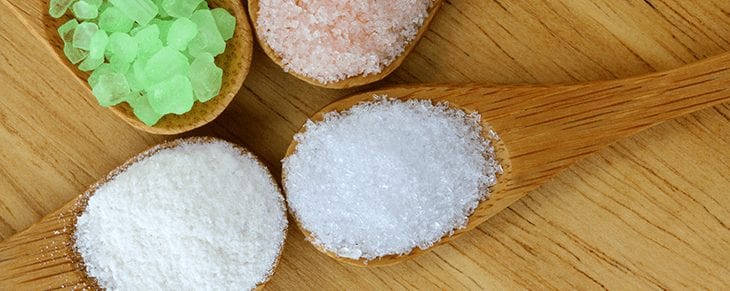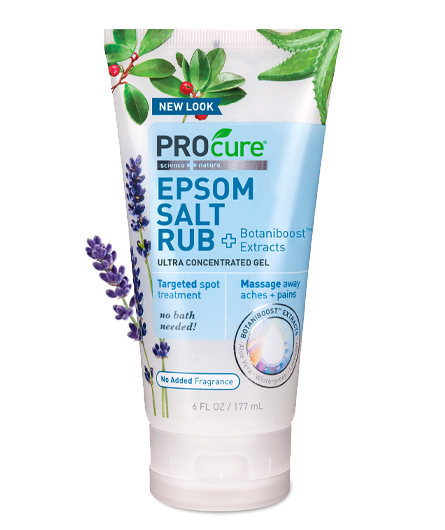How Is Epsom Salt Different from Regular Salt?

Epsom Salt Rub
Introducing Epsom Salt Rub, a concentrated spot treatment gel uniquely formulated with Aloe Vera and essential oils to soothe muscle tension, aches and pains.
Whether you’re suffering from overexertion or a demanding workout, PROcure’s new Epsom Salt Rub helps improve recovery by allowing you to apply the trusted remedy of Epsom Salt directly where it hurts most – without a bath. Rejuvenate and nourish those aches and pains away.

When you think of salt, you probably think of the small white crystals you sprinkle on your food and find on restaurant tables across the globe. However, as far as chemistry is concerned, the word “salt” actually applies to a much wider range of minerals than common table salt. This is your first clue that Epsom salt is much different from the salt you put in your food. Whereas one salt enhances food flavor, the other provides a powerful source of healing. Let’s compare how else Epsom salt differs from traditional salt.
Epsom Salt vs. Table Salt
The difference between Epsom salt and table salt is clear at a molecular level. Table salt, also known as sodium chloride, is made up of the elements sodium (Na) and chlorine (Cl). Epsom salt, on the other hand, is derived from a naturally occurring magnesium sulfate mineral called epsomite, which contains the chemical components magnesium (Mg), sulfur (S) and oxygen (O).
Sodium and Chlorine Content
Sodium is one of the primary elements in table salt, which makes it much more prone to drying than Epsom salt. In fact, there is no Epsom salt sodium content when it’s in its pure form, and epsomite actually has a hydrating benefit thanks to the presence of magnesium. Chlorine can also be an irritant, which makes sodium chloride less beneficial for the skin than magnesium sulfate.
Epsom Salt vs. Table Salt for Infection
Putting table salt on a mildly infected cut or scrape isn’t likely to do much other than cause serious pain in the wound. Saline solutions made with table salt can provide some superficial cleaning benefits, but it isn’t a powerful infection fighter. By contrast, you can expose the same cut or scrape to a warm Epsom salt soak to reduce pain and fight back against the invading bacteria. The sulfur found in Epsom salt is a powerful bacteria-fighting ingredient. Sulfur is widely recognized as an effective antibiotic by allopathic and naturopathic doctors alike.
You can also use topical Epsom salt applications around but not directly on broken, infected skin. The magnesium sulfate will soak into the skin and provide an internal boost for your immune system without irritating the actual site of the wound.
Epsom Salt vs. Table Salt for First Aid
Table salt is often used to create antiseptic saline solutions, but beyond this, it doesn’t really have much use as a first aid treatment. Epsom salt offers a variety of great first aid benefits. For example, if you get a splinter, you can use Epsom salt to reduce swelling around the area, which makes it easier to remove the offending sliver of wood.
Epsom salt’s anti-inflammatory power can also make it an excellent treatment for a joint injury such as a sprained ankle. If you need to treat a swollen sprained ankle or wrist, try applying our Epsom Salt Rub over the area with a gentle touch. Then wrap gently and place an ice pack on top. You’ll get dual soothing and pain-relief benefits from the magnesium sulfate in the rub and the natural healing benefits of ice.
Overall, Epsom salt and table salt are not really comparable — it’s an apples and oranges situation. Regular salt isn’t going to provide healing benefits the way Epsom salt does thanks to the dramatic differences in the two substances’ basic chemical makeup. Experience the healing power of magnesium sulfate with PROcure’s Epsom Salt Rub and see the difference for yourself.